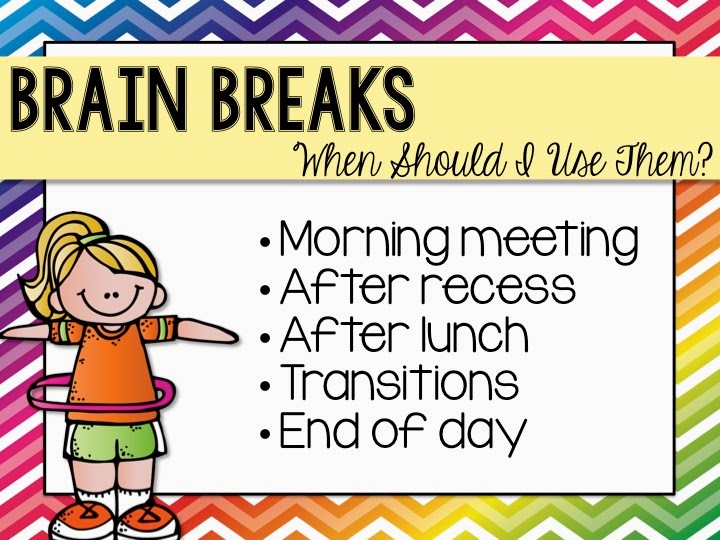Brain breaks are exactly what their name tells us. They are breaks for our brains.
Have you ever worked on something for so long that
you just couldn’t take another minute?
Imagine you are sitting at your computer, working on your report cards. You have been at it for hours now and you just can’t look at that computer screen any longer. You get up, go change the load of laundry or take the dog for a quick jog. Ten minutes later, you sit down in front of your computer and get back to work. You now feel refreshed and ready to work. That, my friends, was a brain break!
Just like us adults, kids need brain breaks too! They need them more than we do.
How Can Brain Breaks Help My Class?
Brain breaks can help your class in so many ways! They are great for taking our minds away from a demanding task in order to reboot our brains. They help us clear our heads and allow us to better focus on assignments. The more we keep our minds active, the better our stamina will be.
Brain breaks can also help calm students after stressful events such as recess, transitions, and school assemblies. I use relaxation and breathing exercises for this.
They help us get our energy up and our creative juices flowing. Try brain breaks before an activity that will require lots of concentration, such as Writers’ Workshop. It will help your students “activate their brains” and will motivate them to write creative stories!
Brain breaks are also a great way to reward your students for good behavior and stamina. If your students work hard on a task and deserve a “pat on the back”, why not let them get their wiggles out by giving them the opportunity to move a little? This will help motivate them to keep working hard.
When Should I Use Brain Breaks?
I use brain breaks at different times of the day. Morning meetings are a great time to use calming breaks. They help get students relaxed for the most important part of the day, your morning meeting. You can read all about using brain breaks during morning meetings HERE.
When students come in from recess and lunch, they can be a little “frazzled” by whatever happens outside. Sometimes, they can come back to class stressed or upset. Sometimes, they come back very excited. Calming breaks are perfect for this time of the day. They help kids get their energy levels under control, which allows them to focus on their learning.
I use breaks during transitions. I feel that they help get kids to easily transfer their thinking from one subject to another by having a “distraction” in between.
Finally, I use breaks at the end of the day as rewards for good behavior.
I mostly use GoNoodle for my “end of the day parties”.
Where Can I Find Them?
You can find brain break videos on YouTube. I strongly suggest that you WATCH them before playing them in your classroom. You never know what you can find on the internet, so make sure you view each video before using it with your class.
Here are a few of my go-to stations on YouTube:
GoNoodle is my FAVORITE brain break resource! This website is FREE and so easy to use!
You can sign up HERE.
Take a look at my class in action!
Click on this picture to get my brain break cards!
You can use dice with clear pockets by inserting post-its or cue cards and rolling the dice.
Have your students model for the class!
Every once in a while, I choose a student to stand in front of the class and act as a model for the rest of us. This student can move as he/she pleases by making circles with his/her arms, jumping up and down, etc. The class quietly imitates the model.
It is a quick and easy brain break!
Leave me a comment below!
I’m always looking for new and fresh ideas.
I’m off to move and groove with my class!
Enter your email below to keep in touch with me.




















